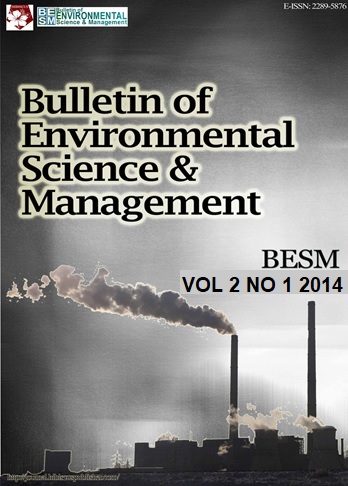Mathematical modelling of the molybdenum reduction kinetics in Bacillus pumilus strain Lbna
DOI:
https://doi.org/10.54987/bessm.v2i1.116Keywords:
Reduction kinetics; Molybdenum; Molybdenum Blue; Bacillus; LuongAbstract
Molybdenum, an emerging pollutant, has just recently been demonstrated to be toxic to spermatogenesis in several animal model systems. Hence its removal and studies on the kinetics of removal is very important at a biotechnological point of view. In this work we study the reduction kinetics of a molybdenum-reducing bacterium using kinetic models such as Haldane, Monod, Teissier, Andrews and Noack, Hinshelwood, Moser, Aiba, Webb (Edward), Yano and Koga, Han and Levenspiel and Luong and evaluated the accuracy of the fitted model using statistical analysis such as Root Mean Square (RMSE), adjusted Coefficient of Determination (R2), corrected Akaike Information Criterion (AICc), Bias Factor, Accuracy Factor and F-test. Statistical analysis shows that the best model was Luong with low values for RMSE and AICc, highest adjusted R2 values, F-test and with Bias Factor and Accuracy Factor nearest to unity (1.0). The calculated value for the Luong’s constants qmax, Ks, Sm, and n were 27.303 hr-1, 115.8 mM, 57.83 mM and 1.405, respectively. The true qmax where the gradient for the slope is zero was approximately 3.38 h-1 at 30 mM molybdenum. The results indicate that the exhaustive use of mathematical models provides new understanding of the way molybdenum inhibits production into molybdenum blue in bacterium. This can provide new knowledge on ways to predict progress of molybdenum reduction in the laboratory and during bioremediation works.
Published
How to Cite
Issue
Section
License
Authors who publish with this journal agree to the following terms:
- Authors retain copyright and grant the journal right of first publication with the work simultaneously licensed under a Creative Commons Attribution License (http://creativecommons.org/licenses/by/4.0) that allows others to share the work with an acknowledgement of the work's authorship and initial publication in this journal.
- Authors are able to enter into separate, additional contractual arrangements for the non-exclusive distribution of the journal's published version of the work (e.g., post it to an institutional repository or publish it in a book), with an acknowledgement of its initial publication in this journal.
- Authors are permitted and encouraged to post their work online (e.g., in institutional repositories or on their website) prior to and during the submission process, as it can lead to productive exchanges, as well as earlier and greater citation of published work (See The Effect of Open Access).


